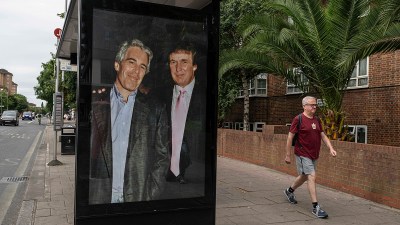Collecting couple has a lot on their plates
About 12 years ago, Brenda and Ken Fritz walked into an antique shop and opened up Pandora’s box. Actually, it was a cupboard, a piece ...

About 12 years ago, Brenda and Ken Fritz walked into an antique shop and opened up Pandora’s box. Actually, it was a cupboard, a piece of Americana they were considering buying to add to their already well-established collection of folk art. It was a pricey piece, and Brenda wanted to see the inside. And in that one small act, she got distracted — a distraction has kept the couple busy ever since. ‘‘There was a piece of pottery,’’ she remembers. ‘‘And I said, ‘What’s that?’ And the dealer said, ‘It’s nothing you collect; it’s a piece of Czech pottery’.’’
The pair walked out of the store with the pitcher and left the cabinet behind. Neither can remember how much it cost: Ken thinks $45, Brenda says $65, but both agree they paid much less than what the sales tax would have been on the kind of collectibles they were used to buying.
Two weeks later, they were in another shop in another state, again looking for folk art. In a dusty cabinet behind a counter, they saw two vases and a pitcher with the same decorative pattern as the pitcher they now owned. ‘‘I said to Brenda, ‘Any time you have three or more of something, you have a collection’,’’ Ken says. Today, the couple own 1,000 pieces of Czech and German ceramics, all dating from the period of that first piece — about 1919 to 1933.
Over the past decade, they have become — they and others believe — the foremost collectors in the US of Eastern European Bauhaus-style ceramics, a very specialized and not at all well-known arena. The ceramics that fill their current home do not resemble the expected image of classic Eastern European tableware. There are no floral patterns, no gold-leaf flourishes.
Rather, these hefty-yet-well-proportioned dinner plates and cake platters, mantle clocks and vases, biscuit holders and spatulas all are decorated with bright, colorful geometric patterns that draw upon the international abstract vocabulary of 1920s and early ’30s Modernist art.
For the Fritzes, the attraction takes on many layers. They love the forms and marvel at the variety of the patterns. They love the hunt and have endless stories of uncovering troves of long-forgotten treasures at flea markets and in shops all over the world. (LATWP)



- 01
- 02
- 03
- 04
- 05




























